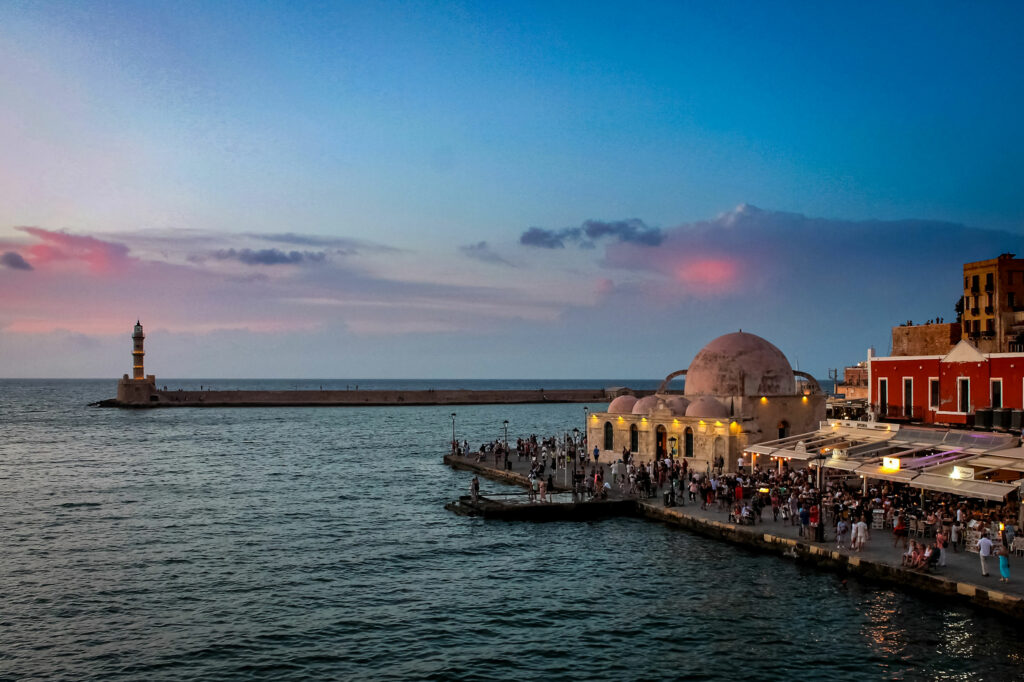Chania is a port town of antiquity, bearing the scars and marvels from millennia of inhabitants and conquerors. A Turkish mosque stands waterside, flanked by a Venetian fortified wall in various phases of decay. A honeymooning couple, hands clasped and wide smiles plastered across their faces, enters a colossal stone boatyard building. Glass fronts the monumental arched opening of the building, which has since traded sailing vessels for a chic coffee shop and restaurant.
An intrepid calico sniffs at the base of an olive tree before dashing up into its branches. The patrons and waiters in the contemporary restaurant built around the tree hardly take notice of the bold climber, even as he leaps from the tree to the modern concrete beams above the patron’s heads in search of a higher perch to hunt songbirds from. The sun meanders low behind a stone lighthouse underlit by Grecian blue and white lights, a contradiction of medieval stone masonry and modern technology the foreground to a setting sun over a tranquil sea.


